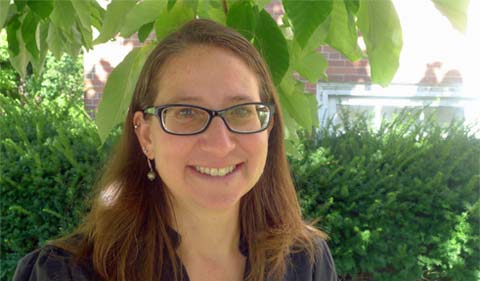Dr. Rebecca Snell will construct a new way to predict how forests might respond to climate change—filling in some big gaps in scientists’ methods and knowledge—thanks to a National Science Foundation grant designed for potentially transformative research.
Her study will bridge the space between empirical studies where researchers observe seed production with modelling studies that typically start with established saplings.
“Tree reproduction and recruitment (the process by which new trees are added to a forest) are critical processes in forest dynamics and are likely to play an important role in the ability of forests to respond to climate change. However, our understanding of these earliest life stages remains uncertain,” said Snell, assistant professor of Environmental & Plant Biology at Ohio University.
Her project will create a “dynamic vegetation model” that encompasses tree recruitment studies and forest growth models. She will build upon an existing model and then test it against observed results over time. Then the dynamic model can be used to simulate a forest’s future to see how it might react to conditions such as a warmer, drier climate.
How does climate change affect tree reproduction?
The NSF Early-Concept Grant for Exploratory Research (EAGER) is designed to support exploratory work in its early stages on potentially transformative research ideas or approaches. Snells’ grant, “EAGER: Quantifying the relative importance of reproduction in forest dynamics under historical and future climate change,” provides $194,085 for two years of study.
“Current modelling studies typically assume that recruitment is not limited by seed supply or seedling establishment and simulate recruitment directly from saplings,” Snell said. “But most DVMs do not include a direct link between weather and reproduction. This is a critical weakness of these models since the ability of forests to respond to ongoing and future climate changes ultimately depends on tree reproduction and recruitment.
“An updated DVM can simulate climate change impacts on multiple processes, with multiple species, using species-specific relationships for growth, mortality and reproduction. This is a necessary step to more accurately predict species turnover and composition in the future, and to quantify the role of reproduction in forest dynamics,” she said.
Focusing on Forests in the Northwest
Snell will be focusing her study on the Pacific Northwest, where decreased summer and fall precipitation have increased water deficits over the past 40 years. Her model will compare simulated forests with empirical forest data from the national Forest Inventory and Analysis database, to evaluate the ability of the model to capture species composition and forest dynamics. Then Snell will use simulation experiments to quantify the impact of climate change on tree growth and mortality, seedling survival, and the relationship between tree growth and reproduction.
“It is possible that we discover that reproduction plays a relatively small role in forest dynamics, under historical and future climate. However, regardless of the outcome, there is the potential for a large pay-off. If reproduction is a critical process for forest responses to climate change, then this is an important area for future research,” she said.
Another benefit is that graduate and undergraduate students working in Snell’s lab will receive valuable training in computer programming, database management, data analysis, and communicating science to a variety of audiences.
“These skills have become essential for careers both inside and outside academia,” she says.




















Comments